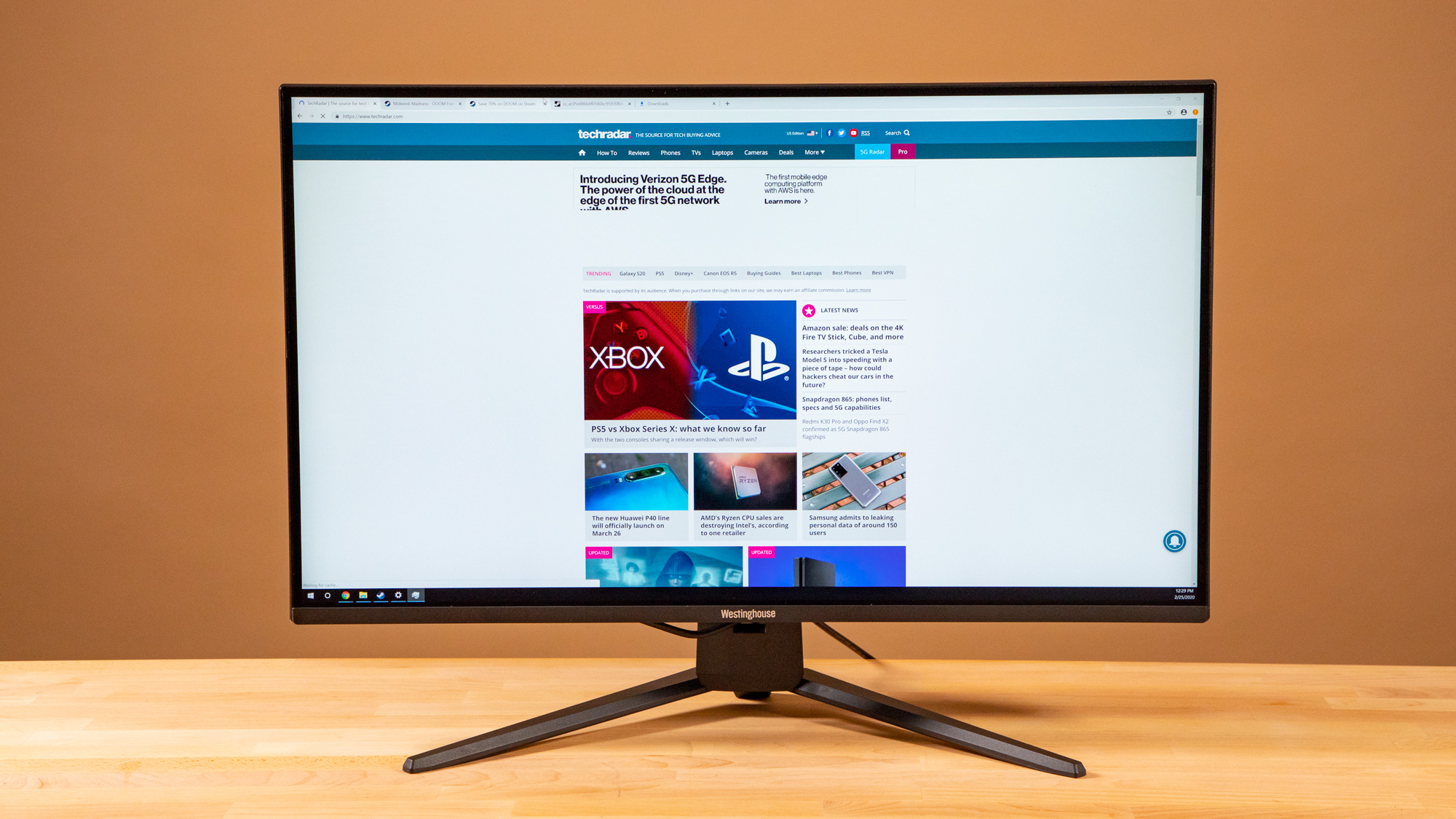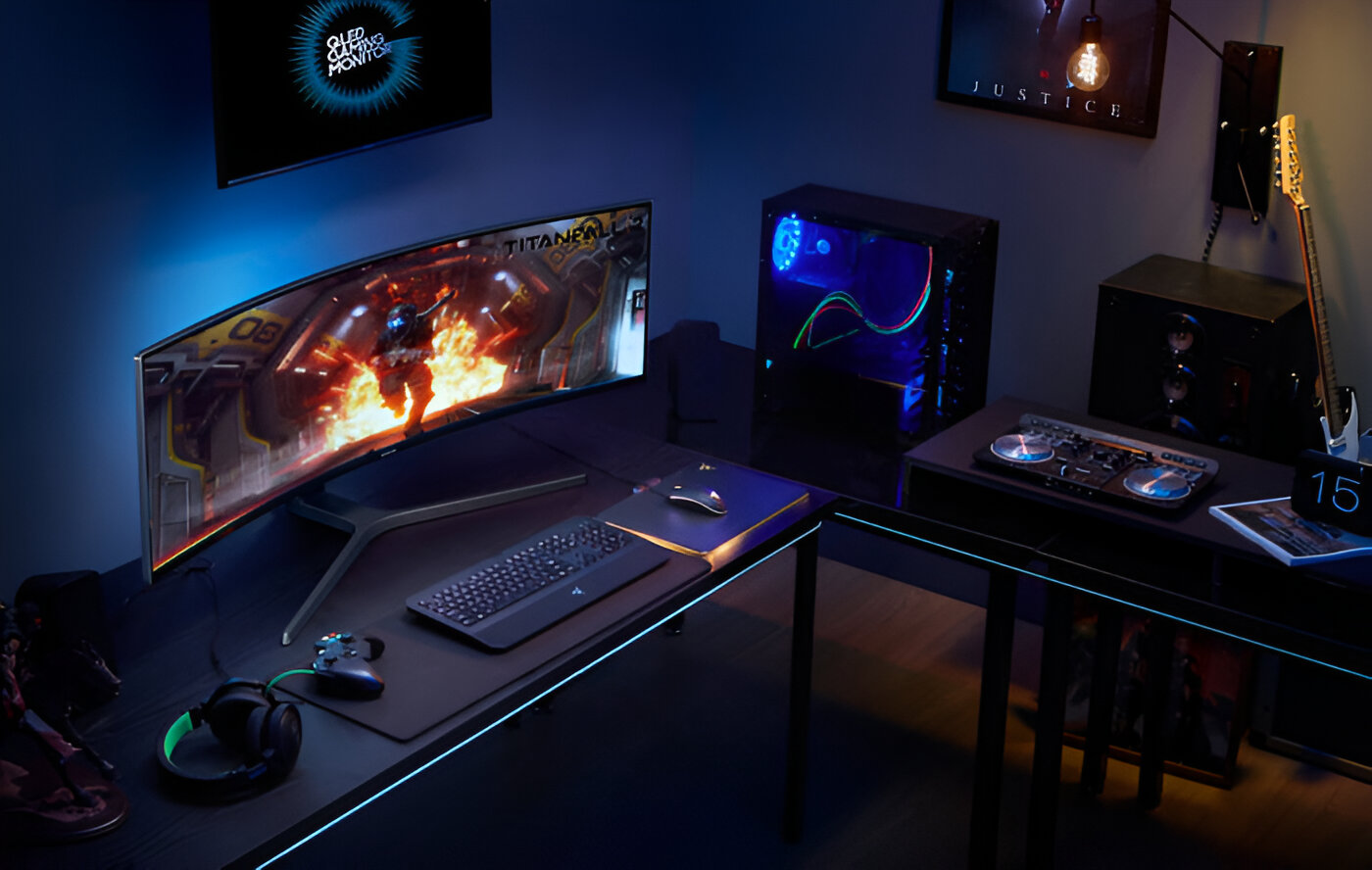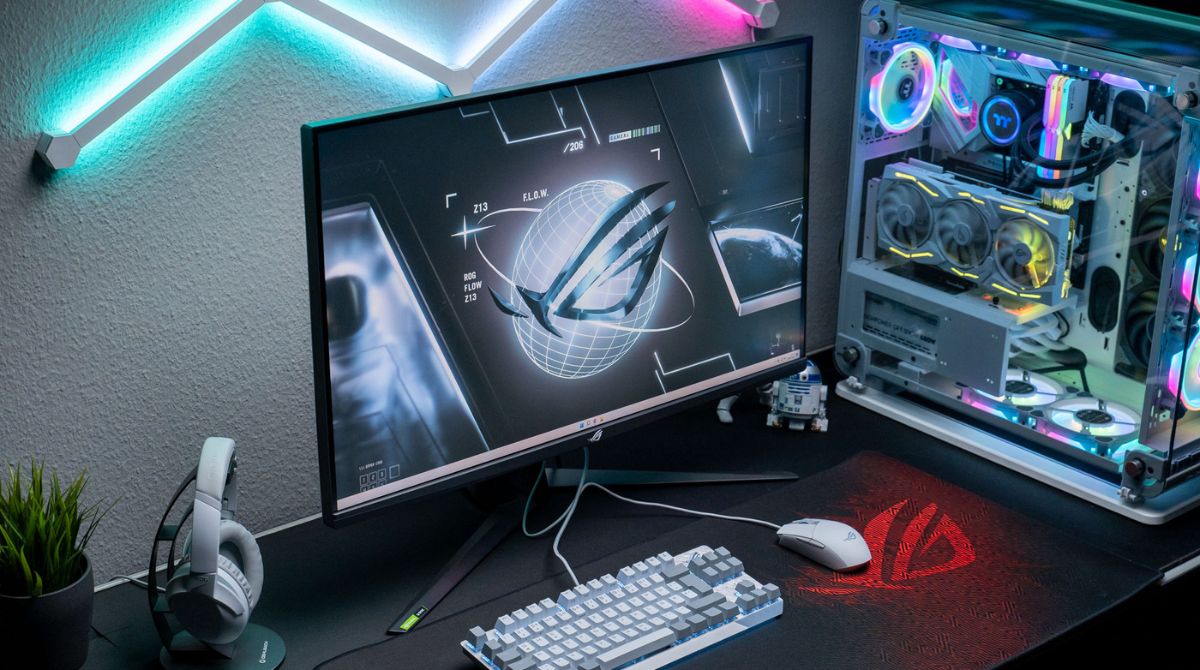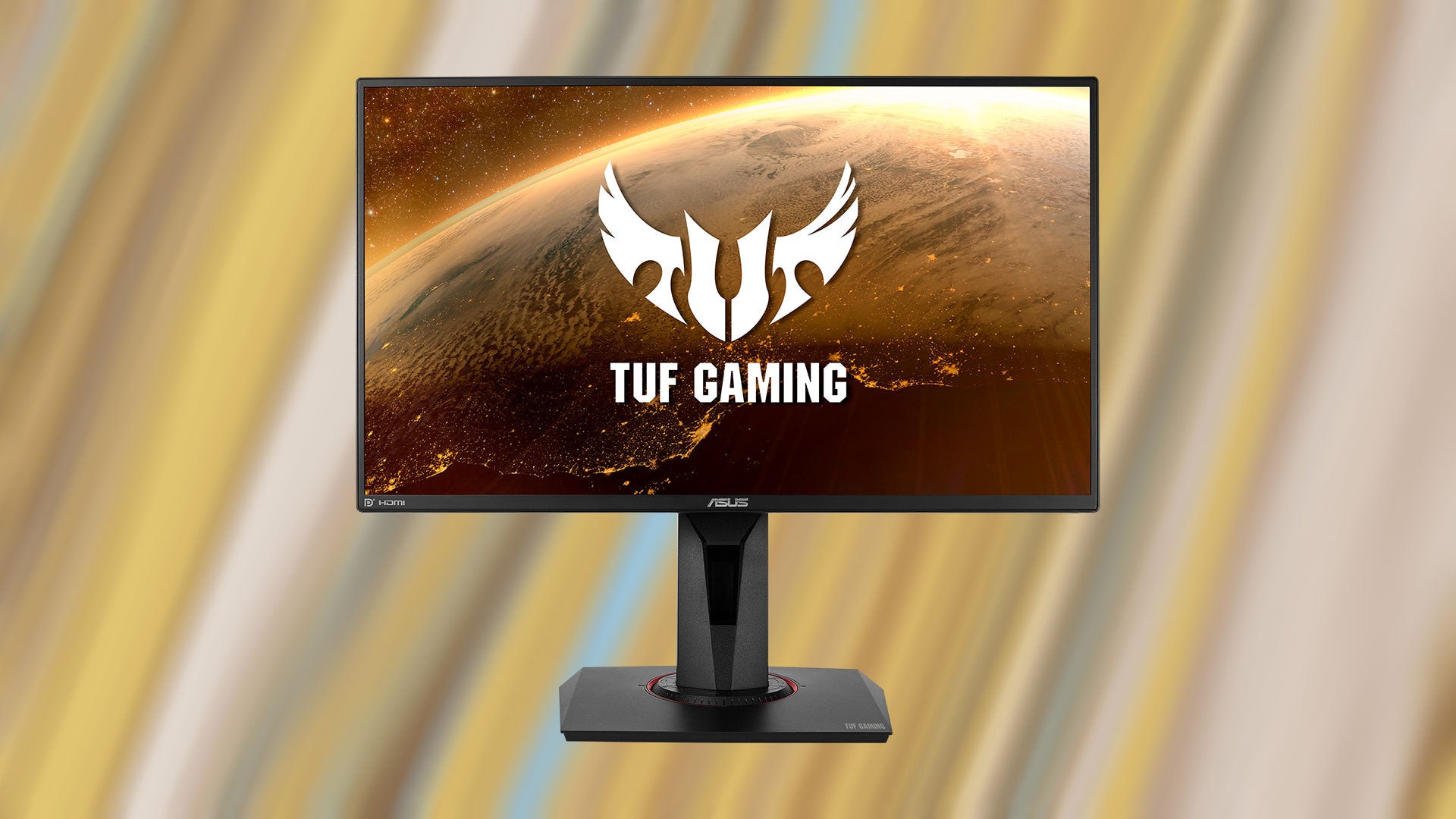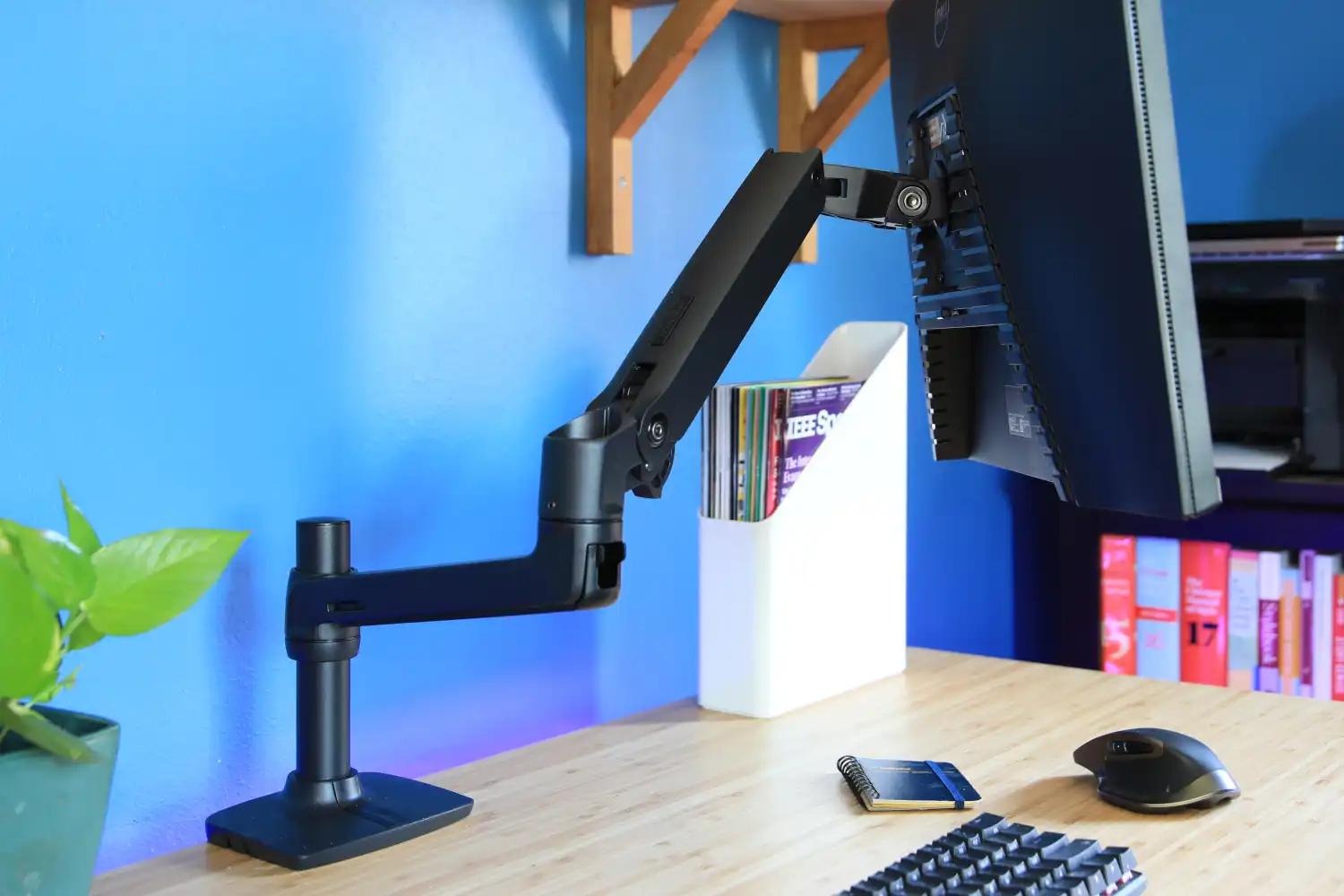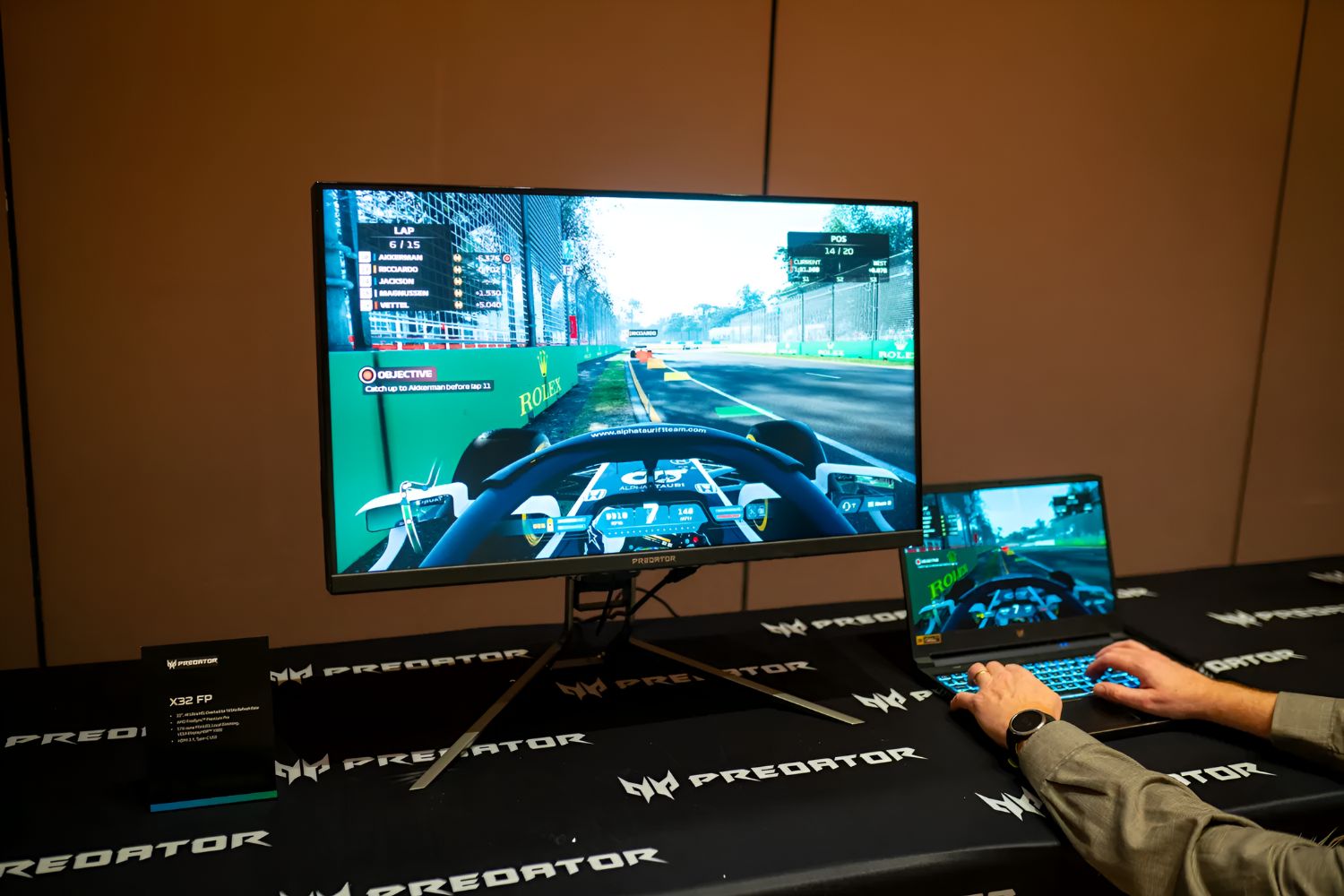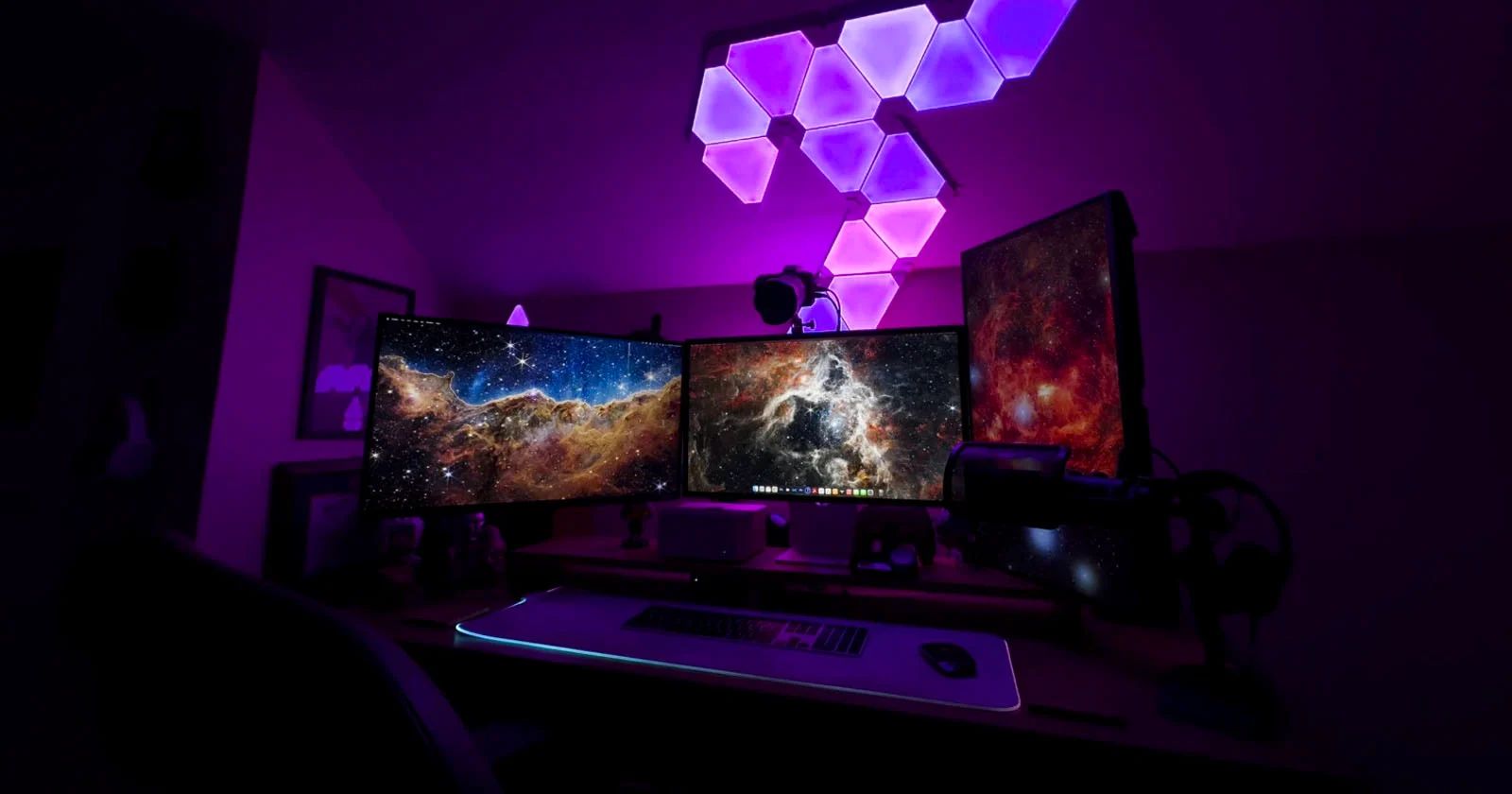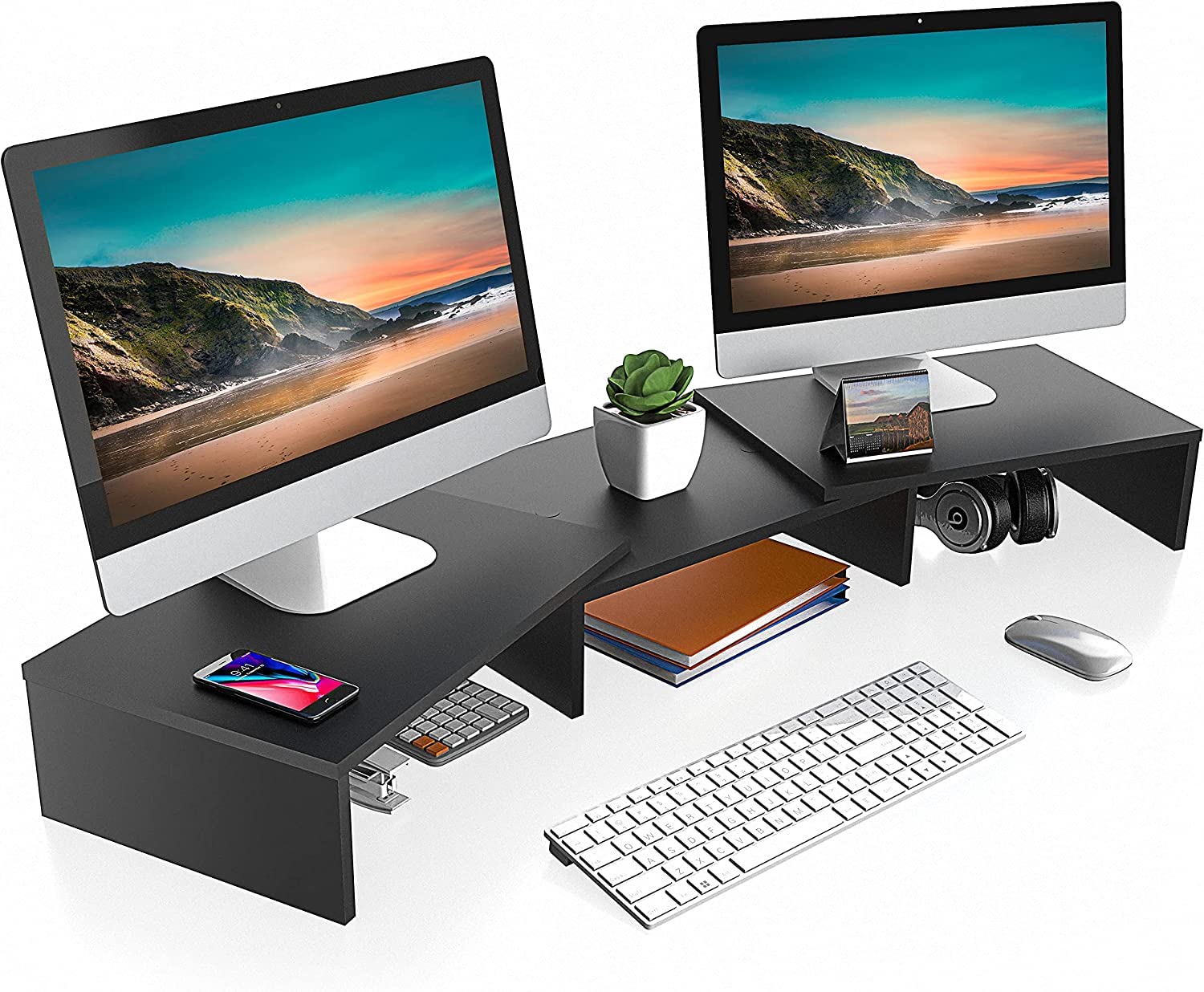Screen Size
When choosing a monitor, one of the first factors to consider is the screen size. The screen size determines how much space you have to work with and how immersive your viewing experience will be.
A larger screen size provides a wider display area, which can be beneficial for tasks that require multiple windows or for watching movies and videos. It allows you to see more details and reduces the need for scrolling or zooming in. However, larger screens may take up more desk space and can be less portable.
On the other hand, a smaller screen size offers a more compact and portable option. This can be advantageous if you have limited desk space or if you frequently travel with your monitor. Smaller screens are also more energy-efficient and tend to be more budget-friendly.
When deciding on the ideal screen size, consider your specific needs and preferences. If you primarily use your monitor for office work or graphic design, a larger screen size, such as 27 inches or above, would provide ample space for multitasking and detailed work. For casual users or those with limited space, a screen size between 21 and 24 inches may be sufficient.
Keep in mind that the optimal viewing distance will also depend on the screen size. It’s generally recommended to sit at a distance of about an arm’s length away from the monitor for comfortable viewing.
In summary, the screen size of a monitor should be chosen based on your specific requirements, desk space availability, and budget. Whether you opt for a larger or smaller screen, ensure it provides an optimal viewing experience and meets your needs for work, entertainment, or both.
Resolution
Resolution refers to the number of pixels displayed on the screen and determines the level of detail and clarity in the images and text. When selecting a monitor, it’s essential to consider the resolution that best suits your needs.
There are various resolution options available, with the most common being Full HD (1920×1080 pixels). This resolution works well for most tasks, including web browsing, document editing, and streaming videos. It provides a sharp and clear display on screens up to 24 inches.
For users who require more screen real estate or work with high-resolution content, a higher resolution, such as Quad HD (2560×1440 pixels) or 4K Ultra HD (3840×2160 pixels), is recommended. These resolutions offer more pixels, resulting in sharper details and enhanced image quality, particularly on larger screens.
It’s worth noting that higher resolutions require more graphics processing power, so ensure your computer or device can support the chosen resolution. Additionally, consider the size of the monitor and your typical viewing distance. For example, a 4K resolution on a 24-inch screen may not be as noticeable compared to a larger screen, where the increased pixel density is more apparent.
While a higher resolution generally offers a better viewing experience, keep in mind that some applications and websites may not be optimized for higher resolutions. In such cases, you may need to adjust the scaling or zoom settings to maintain optimal readability and usability.
In summary, the resolution of a monitor determines the level of detail and clarity in the displayed content. Consider your specific needs, the size of the monitor, and your viewing distance when choosing a resolution. Whether you opt for Full HD, Quad HD, or 4K Ultra HD, ensure that it aligns with your work requirements and offers an enjoyable visual experience.
Panel Type
The panel type of a monitor refers to the technology used to produce the screen. It can have a significant impact on the image quality, color accuracy, and viewing angles. Here are some common panel types to consider when choosing a monitor:
1. Twisted Nematic (TN): TN panels are known for their fast response times, making them ideal for gaming and fast-paced activities. They offer high refresh rates and low input lag, resulting in smoother motion and reduced blur. However, TN panels tend to have narrower viewing angles and poorer color reproduction compared to other panel types.
2. In-Plane Switching (IPS): IPS panels are known for their excellent color accuracy and wide viewing angles. They deliver vibrant and lifelike images, making them suitable for tasks that require accurate color representation, such as photo editing and graphic design. IPS panels typically have slower response times compared to TN panels, but advancements in technology have reduced the gap.
3. Vertical Alignment (VA): VA panels provide a balance between the fast response times of TN panels and the superior color accuracy of IPS panels. They offer deep blacks and high contrast ratios, resulting in more immersive viewing experiences. VA panels tend to have slightly slower response times compared to TN panels but generally perform better than IPS panels in this regard.
4. OLED (Organic Light Emitting Diode): OLED panels are becoming increasingly popular due to their ability to produce deep blacks, infinite contrast ratios, and vibrant colors. They offer exceptional image quality and wide viewing angles. OLED monitors are well-suited for multimedia and content creation but may come at a higher price point compared to other panel types.
When choosing a panel type, consider your usage requirements and priorities. If you prioritize fast response times and smooth gaming performance, a TN panel may be the best choice. If color accuracy and wide viewing angles are crucial, an IPS or VA panel would be more suitable. OLED panels, while offering exceptional image quality, are still relatively expensive and are typically found in high-end monitors.
It’s important to note that panel type is just one factor contributing to the overall performance and image quality of a monitor. Other specifications, such as resolution, refresh rate, and color gamut, also play significant roles, so consider the entire package when making your decision.
Refresh Rate
The refresh rate of a monitor refers to how many times the screen refreshes the image per second. It is measured in Hertz (Hz) and has a direct impact on the smoothness of motion on the screen. A higher refresh rate can result in a more fluid and responsive viewing experience, particularly in fast-paced activities like gaming or watching action-packed videos.
Standard monitors usually have a refresh rate of 60Hz, which means the screen refreshes the image 60 times per second. This is suitable for most everyday tasks like web browsing and document editing. However, if you’re a gamer or require a more responsive display, consider a monitor with a higher refresh rate.
Monitors with a refresh rate of 144Hz or above are becoming increasingly popular among gamers. The higher refresh rate reduces motion blur and provides smoother gameplay. This is especially beneficial in fast-action games, where quick reactions and precise movements are crucial. It can also help reduce eye fatigue during longer gaming sessions.
There are even monitors available with refresh rates of 240Hz or higher, but keep in mind that achieving the full benefits of such high refresh rates requires a powerful graphics card and the ability to consistently deliver high frame rates.
It’s important to note that to take full advantage of a higher refresh rate, your computer or console needs to be capable of producing the corresponding frame rates. Additionally, not all applications or content may be optimized for higher refresh rates, so the benefits may vary depending on the specific use case.
In summary, the refresh rate of a monitor determines the smoothness of motion on the screen. Consider a higher refresh rate, such as 144Hz or above, if you’re a gamer or require a more responsive display. However, be mindful of the hardware requirements and compatibility with your applications and content.
Response Time
The response time of a monitor refers to how quickly it can change the color of pixels from one shade to another. It is measured in milliseconds (ms) and plays a crucial role in reducing motion blur and ghosting in fast-moving visuals.
A lower response time indicates faster pixel transitions and results in sharper and more fluid images, particularly in fast-paced activities like gaming or watching action movies. Most mainstream monitors have a response time of 4-5ms, which is suitable for everyday use and casual gaming.
However, for competitive gamers or those who prioritize smoother motion, it’s recommended to consider a monitor with a response time of 1-2ms. These monitors offer minimal motion blur and ghosting, allowing for more precise tracking of fast-moving objects. This can be particularly advantageous in first-person shooter (FPS) games or any application where swift reactions are necessary.
It’s worth noting that the response time advertised by manufacturers is typically the “gray-to-gray” (GTG) response time, which measures the transition from one shade of gray to another. The actual response time may vary depending on the colors involved, and different panels may handle response times differently, so it’s essential to consider individual monitor reviews and real-world performance.
Additionally, response time can be impacted by other factors such as the refresh rate and panel type of the monitor. Higher refresh rates can help reduce the perceived motion blur, even with slightly higher response times. Panels with advanced technologies like IPS or VA may have slightly slower response times compared to TN panels but can still offer excellent visual performance.
In summary, the response time of a monitor affects the clarity of fast-moving visuals. Consider a lower response time, such as 1-2ms, if you’re a competitive gamer or prioritize smoother motion. However, take into account other factors like refresh rate and panel type, as they can also contribute to the overall visual performance.
Color Gamut
The color gamut of a monitor refers to the range of colors it can display. It is often represented using color space standards such as sRGB or Adobe RGB. A wider color gamut means the monitor can reproduce a larger variety of colors, resulting in more vibrant and accurate color representation.
For most general tasks, a monitor with a standard color gamut, such as sRGB, is sufficient. This color space covers a significant portion of the colors that can be displayed on digital devices and is widely used for web content, office applications, and multimedia consumption.
However, for professional photographers, graphic designers, or anyone working in color-critical fields, a monitor with a wider color gamut can be essential. Monitors with an extended color gamut, such as Adobe RGB or DCI-P3, offer a more extensive range of colors and can accurately reproduce more shades and nuances. These monitors are ideal for tasks involving color editing, photo retouching, video editing, and print production.
It’s important to note that while a wider color gamut provides more accurate and vibrant colors, it also depends on other factors like panel type and calibration. Proper calibration is crucial to ensure colors are accurately represented across different devices. Consider investing in a color calibration tool or consulting professional calibration services for the best results.
Keep in mind that the content you work with also needs to be compatible with the chosen color gamut. If your work primarily involves content created and consumed within the standard sRGB color space, a wider color gamut may not be necessary and might even cause certain colors to appear oversaturated or distorted.
In summary, the color gamut of a monitor determines the range of colors it can accurately display. For general use and multimedia consumption, a standard color gamut like sRGB is typically sufficient. However, professionals and color-critical tasks may benefit from a monitor with an extended color gamut like Adobe RGB or DCI-P3, ensuring more accurate color representation.
Connectivity Options
The connectivity options available on a monitor are essential to consider, as they determine how you can connect various devices and peripherals to your screen. Having the right connectivity options ensures compatibility and flexibility in your setup. Here are some common connectivity options to look for:
1. HDMI: HDMI (High-Definition Multimedia Interface) is widely used and supports both high-definition video and audio. Most modern devices, including laptops, gaming consoles, and streaming devices, come equipped with HDMI ports. Having multiple HDMI ports allows you to connect multiple devices simultaneously without needing to constantly switch cables.
2. DisplayPort: DisplayPort is another popular digital video and audio interface that supports high-resolution displays and high refresh rates. It is commonly found on gaming monitors, graphics cards, and high-end laptops. DisplayPort offers similar functionality to HDMI but may also support additional features like daisy-chaining multiple monitors.
3. DVI: DVI (Digital Visual Interface) is an older video interface but is still present on some monitors and graphics cards. It can carry digital signals and is capable of delivering high-quality video, although it doesn’t support audio. It’s worth noting that some newer devices and laptops may not have DVI ports, so check for compatibility if you rely on this connection.
4. USB-C: USB-C is a versatile and increasingly common connectivity option found on many modern laptops, tablets, and smartphones. It not only supports high-speed data transfer but can also carry video and audio signals, making it a coveted feature for those seeking simplicity and versatility in their setup. Additionally, USB-C ports can often provide power delivery to charge your device while connected.
5. VGA: VGA (Video Graphics Array) is an older analog video connection that is gradually being phased out. However, some legacy devices may still use VGA, so having a VGA port on your monitor can offer compatibility with older hardware.
In addition to these primary connectivity options, it’s also worth considering other ports like USB-A ports for connecting peripherals, audio jacks for audio output or input, and even built-in card readers for easy access to memory cards.
When selecting a monitor, assess your specific needs and the devices you use regularly. Ensure that the monitor has the necessary connectivity options to accommodate your devices without relying heavily on adapters or converters. This will simplify your setup and enhance the overall user experience.
Display Adjustments
Display adjustments refer to the different settings and features available on a monitor that allow you to customize and optimize the visual output according to your preferences and specific requirements. These adjustments play a significant role in ensuring a comfortable and enjoyable viewing experience. Here are some common display adjustments to consider:
1. Brightness: The brightness setting controls the overall luminance of the display. Adjusting the brightness allows you to adapt the screen to different lighting conditions, ensuring optimal visibility and reducing eye strain. It’s recommended to set the brightness at a comfortable level that is neither too dim nor too bright.
2. Contrast: Contrast is the difference between the brightest and darkest parts of the image. Adjusting the contrast allows you to enhance the clarity and vibrancy of the displayed content. Find a balance that brings out the details without making the image appear overly washed out or saturated.
3. Color Temperature: Color temperature determines the color tone of the display. It is measured in Kelvin and can be adjusted to make the screen warmer (more yellowish) or cooler (more bluish). Finding the right color temperature is subjective and depends on personal preference and the nature of the task. For example, a warmer color temperature might be more suitable for reading or evening use, while a cooler temperature might enhance visuals in graphic design or photo editing.
4. Gamma: Gamma settings affect the brightness and contrast of a display’s mid-tones. Adjusting the gamma helps achieve accurate gradation and ensure that details in the shadows and highlights are appropriately visible. Fine-tuning the gamma can enhance the overall contrast and depth of the displayed content.
5. Sharpness: The sharpness setting allows you to adjust the level of edge enhancement to make the image appear sharper or softer. Be cautious not to over-sharpen, as it can introduce artifacts and distortions. Finding the right balance is subjective and depends on personal preference and the type of content being viewed.
6. Aspect Ratio: The aspect ratio controls the proportion of the width to the height of the screen. Most monitors offer a widescreen aspect ratio of 16:9, which is suitable for most tasks and multimedia content. However, certain specialized applications or older video formats may require a different aspect ratio, such as 4:3 or 21:9. Ensure that the monitor supports the aspect ratio needed for your specific needs.
7. On-Screen Display (OSD): Many monitors provide an OSD menu that allows you to access and adjust various settings. The OSD menu lets you navigate through different options using physical buttons on the monitor or an on-screen interface. Familiarize yourself with the OSD menu and its functionality to make precise adjustments to suit your preferences.
These are just a few examples of display adjustments that can be found on monitors. The availability and extent of these settings can vary depending on the monitor model and brand. Take the time to explore and experiment with these adjustments to fine-tune your display and create a visually appealing and comfortable viewing experience.
Ergonomics
Ergonomics plays a vital role in ensuring a comfortable and healthy working environment. When choosing a monitor, it’s important to consider its ergonomic features to promote proper posture, reduce fatigue, and minimize the risk of strain or injury. Here are some key ergonomic factors to look for:
1. Adjustable Stand: A monitor stand that offers height adjustment allows you to position the screen at eye level or a comfortable viewing angle. This helps prevent neck strain and promotes good posture. Ideally, the monitor should be positioned in such a way that the top of the screen is at or slightly below eye level.
2. Tilt and Swivel: Having the ability to tilt the monitor backward or forward and swivel it left or right provides further flexibility in finding a comfortable viewing position. Tilt adjustment helps reduce glare and optimize the viewing angle, while swivel adjustment allows you to share your screen or adjust it for different tasks.
3. Pivot: Some monitors offer a pivot adjustment that allows you to rotate the screen orientation from landscape to portrait mode. This can be beneficial for tasks that involve reading or working with vertical content, providing a more natural and ergonomic setup for such tasks.
4. Cable Management: A monitor with integrated cable management features helps keep the desk neat and organized. It prevents cables from tangling and eliminates clutter, reducing the risk of accidents and making it easier to maintain a clean and efficient workspace.
5. Eye Care Features: Many monitors now come with eye care technologies such as flicker-free screens and blue light filters. These features help reduce eye strain, eye fatigue, and the potential long-term effects of prolonged screen exposure, such as digital eye strain or disrupted sleep patterns.
6. VESA Mount Compatibility: VESA mount compatibility allows you to attach the monitor to a wall mount or an adjustable arm, providing more flexibility in positioning and freeing up valuable desk space. This is particularly useful for multi-monitor setups or if you prefer a more customized and space-efficient arrangement.
When setting up your monitor, ensure that the screen is positioned at a comfortable distance from your eyes, generally around an arm’s length away. The monitor should also be positioned in a way that avoids any significant reflections from external light sources.
By considering the ergonomics of your monitor and adjusting it to suit your individual needs, you can create a healthier and more comfortable work environment, reducing the likelihood of musculoskeletal issues and improving your overall productivity and well-being.
Price and Value for Money
When purchasing a monitor, price is undeniably a crucial factor to consider. It’s essential to find a balance between your budget and the features and performance you need. However, it’s equally important to assess the value for money that a monitor offers. Here are some considerations to keep in mind:
1. Specifications and Features: Compare the specifications and features of different monitors in your price range. Determine which features are essential for your specific needs and prioritize them. For example, if you’re a gamer, focus on monitors with higher refresh rates and lower response times. Assess the overall performance and suitability for your desired tasks.
2. Build Quality and Durability: While it may be tempting to opt for the cheapest option, remember that lower-priced monitors may compromise on build quality. Assess customer reviews and the reputation of the brand to gauge the overall durability and longevity of the product. Investing in a monitor that lasts longer and offers better build quality can be more cost-effective in the long run.
3. Warranty and Customer Service: Consider the warranty provided with the monitor. A longer warranty period indicates the manufacturer’s confidence in the product’s quality. Additionally, research the customer service reputation of the brand, as reliable customer support can be invaluable in case of any issues or troubleshooting needs.
4. User Reviews and Recommendations: Look for user reviews and recommendations from trusted sources or online communities. Reading about the real experiences of other users can provide insights into the performance, reliability, and value for money of different monitors. However, be cautious of biased or overly subjective reviews and seek a balanced assessment.
5. Brand Reputation: Consider the reputation and history of the brand. Established brands with a proven track record in manufacturing monitors often come with reliable performance and customer support. However, don’t discount newer or lesser-known brands that may offer competitive features and pricing. Research and compare the specifications and reviews to make an informed decision.
6. Long-Term Considerations: Think about the longevity of your monitor investment. Consider future upgrades and compatibility with newer technologies. Assess whether the monitor has the necessary ports and features to adapt to evolving needs and ensure it remains relevant for a reasonable amount of time.
While it can be tempting to focus solely on the price tag, considering the overall value for money will help you make a more informed decision. By assessing the specifications, build quality, warranty, customer reviews, brand reputation, and long-term considerations, you can find a monitor that offers a suitable balance between features, performance, and affordability.
Brand and Warranty
When purchasing a monitor, the brand and warranty are important factors to consider. The reputation of the brand and the terms of the warranty can provide valuable insights into the quality and support you can expect. Here’s why brand and warranty matter:
1. Brand Reputation: Established brands with a long history of manufacturing monitors often have a proven track record of quality and reliability. They invest in research and development, ensuring their products meet industry standards and customer expectations. These brands have built a reputation for producing monitors known for their performance, durability, and customer satisfaction. However, it’s essential to assess each model individually, as even reputable brands may have variations in the quality of their specific products.
2. Customer Support: The brand’s commitment to customer support is crucial. A reliable and responsive customer support system can provide peace of mind and assistance in case of any issues or concerns. Look for brands that have a reputation for timely and efficient customer service, as it can greatly impact your experience and help resolve any problems that may arise.
3. Warranty Coverage: The warranty offered by the brand is a reflection of their confidence in the quality and reliability of their product. A longer warranty period indicates that the brand stands behind their monitor and is willing to provide support in case of defects or malfunctions. Review the terms and conditions of the warranty, including what is covered and for how long. Understanding the warranty coverage will help you make an informed decision and protect your investment.
4. Extended Warranty Options: Some brands offer the option to purchase extended warranty coverage for an additional cost. Consider the value and benefits of extending the warranty period, especially for higher-end monitors or if you plan to use the monitor for an extended period. This extra coverage can provide added security and assurance in the event of any unforeseen issues beyond the standard warranty period.
5. User Reviews and Recommendations: User reviews and recommendations can provide insights into the experiences of other customers with a particular brand and their monitors. Consider reading reviews from trusted sources and online communities to see if others have had positive experiences with the brand’s products and warranty support. Keep in mind that individual experiences may vary, so seek a balance of opinions.
When selecting a monitor, take into account the brand’s reputation, customer support, warranty coverage, and user reviews. By choosing a reputable brand that offers reliable customer support and a comprehensive warranty, you enhance the likelihood of a positive purchase experience, backed by assurance and assistance if needed.







